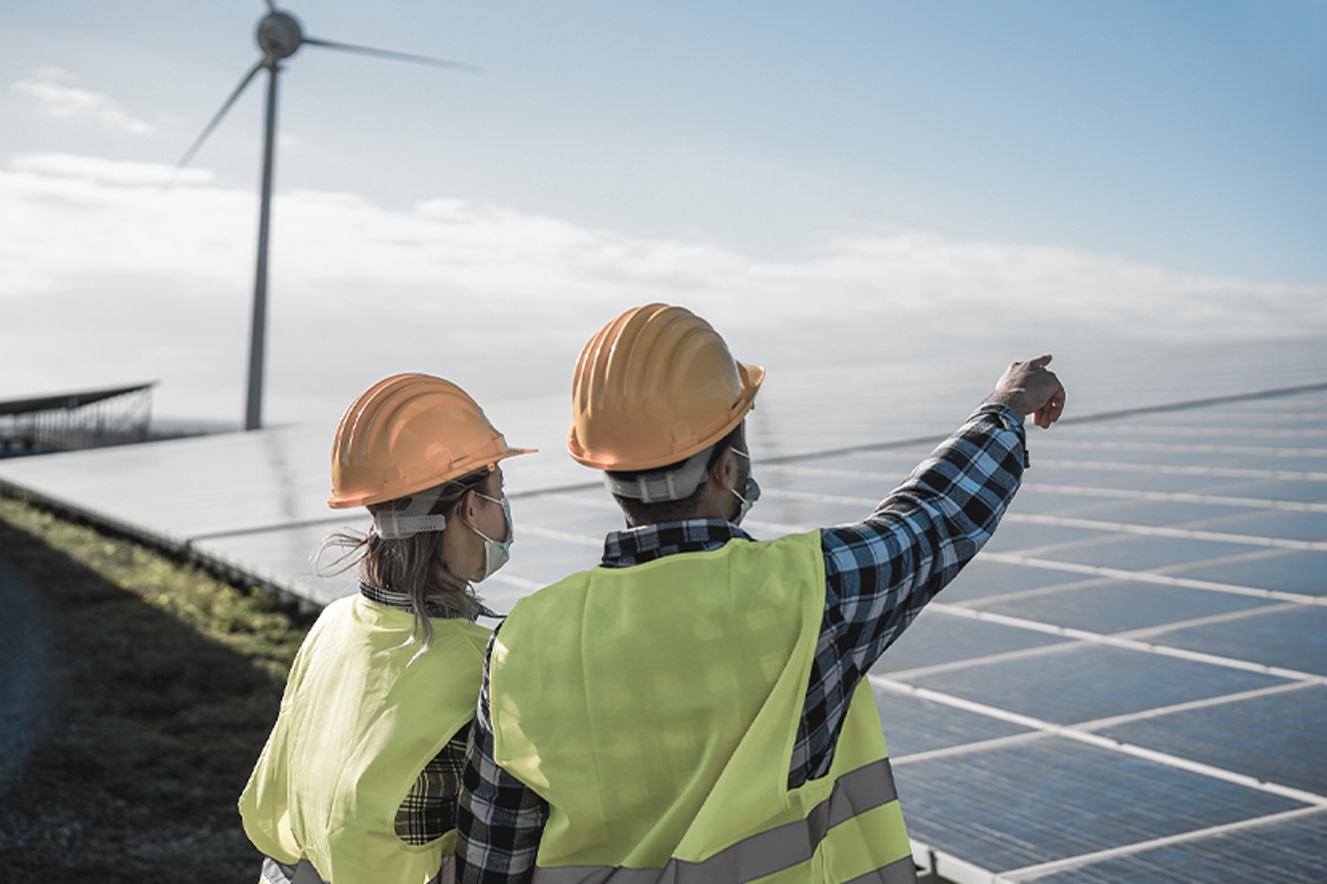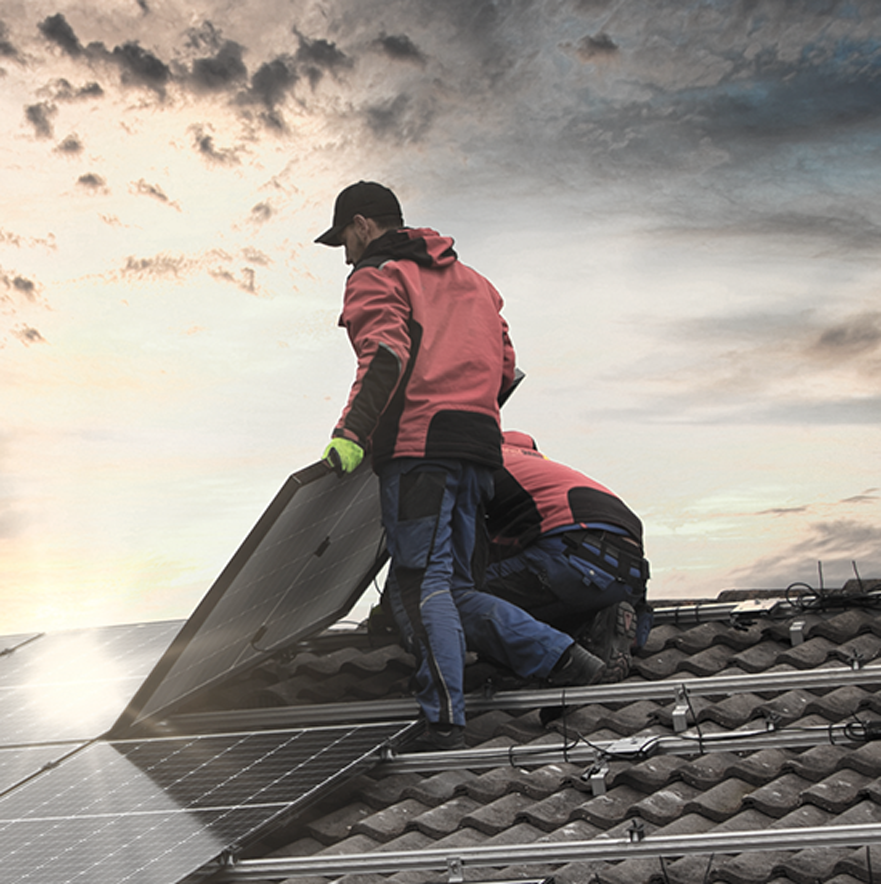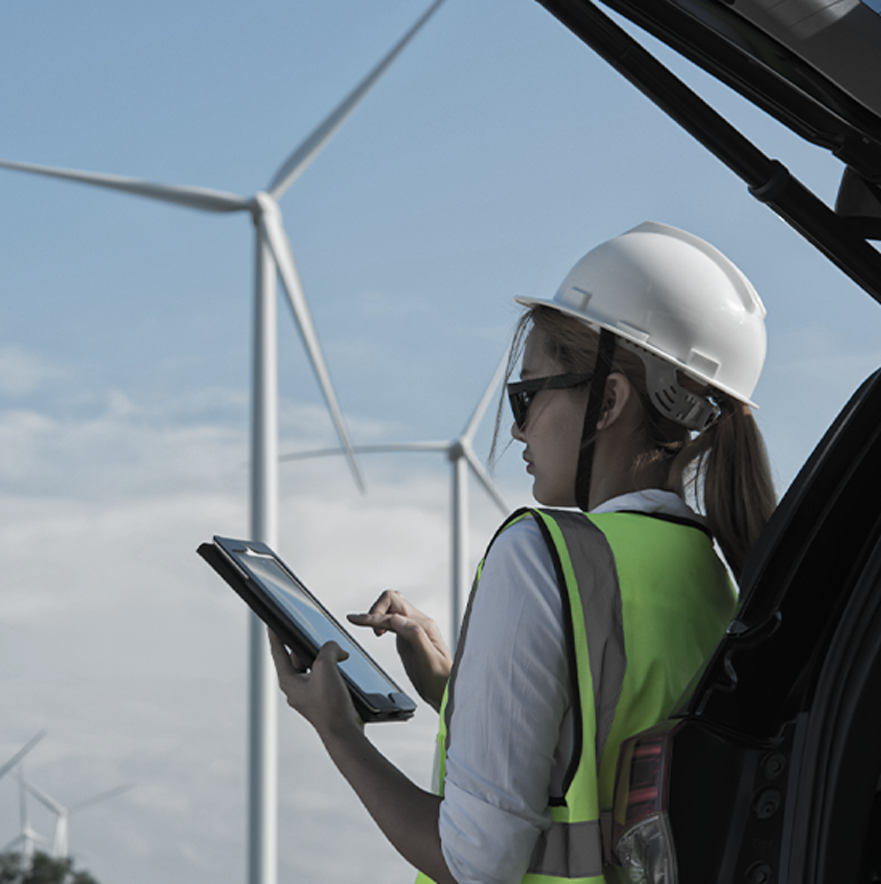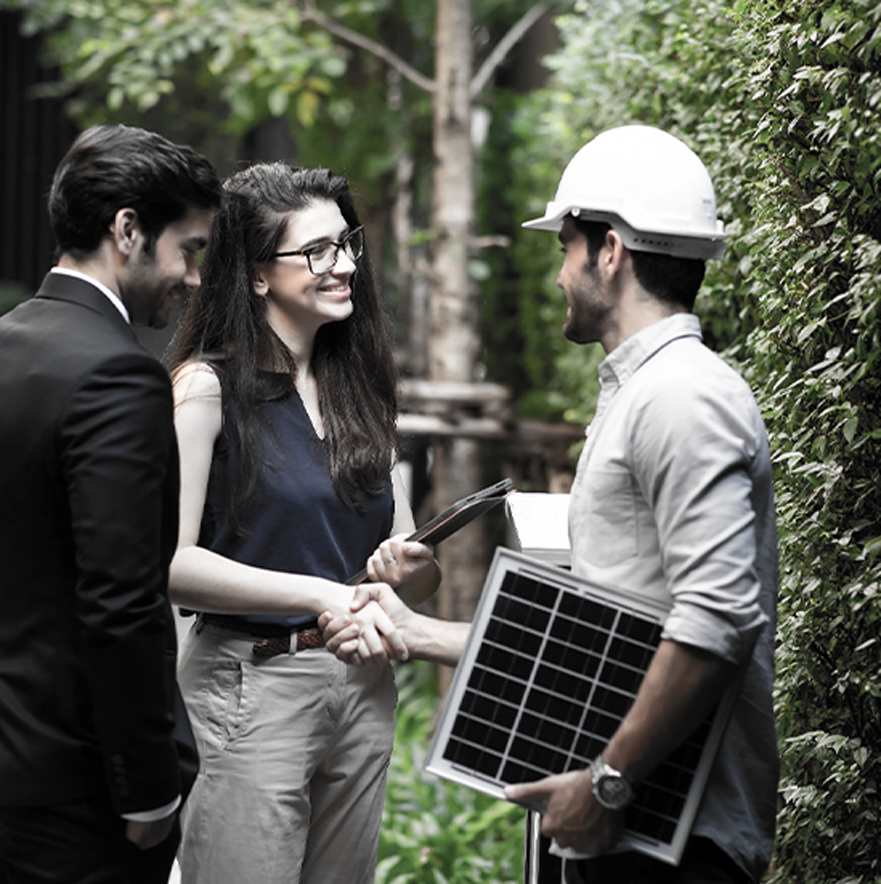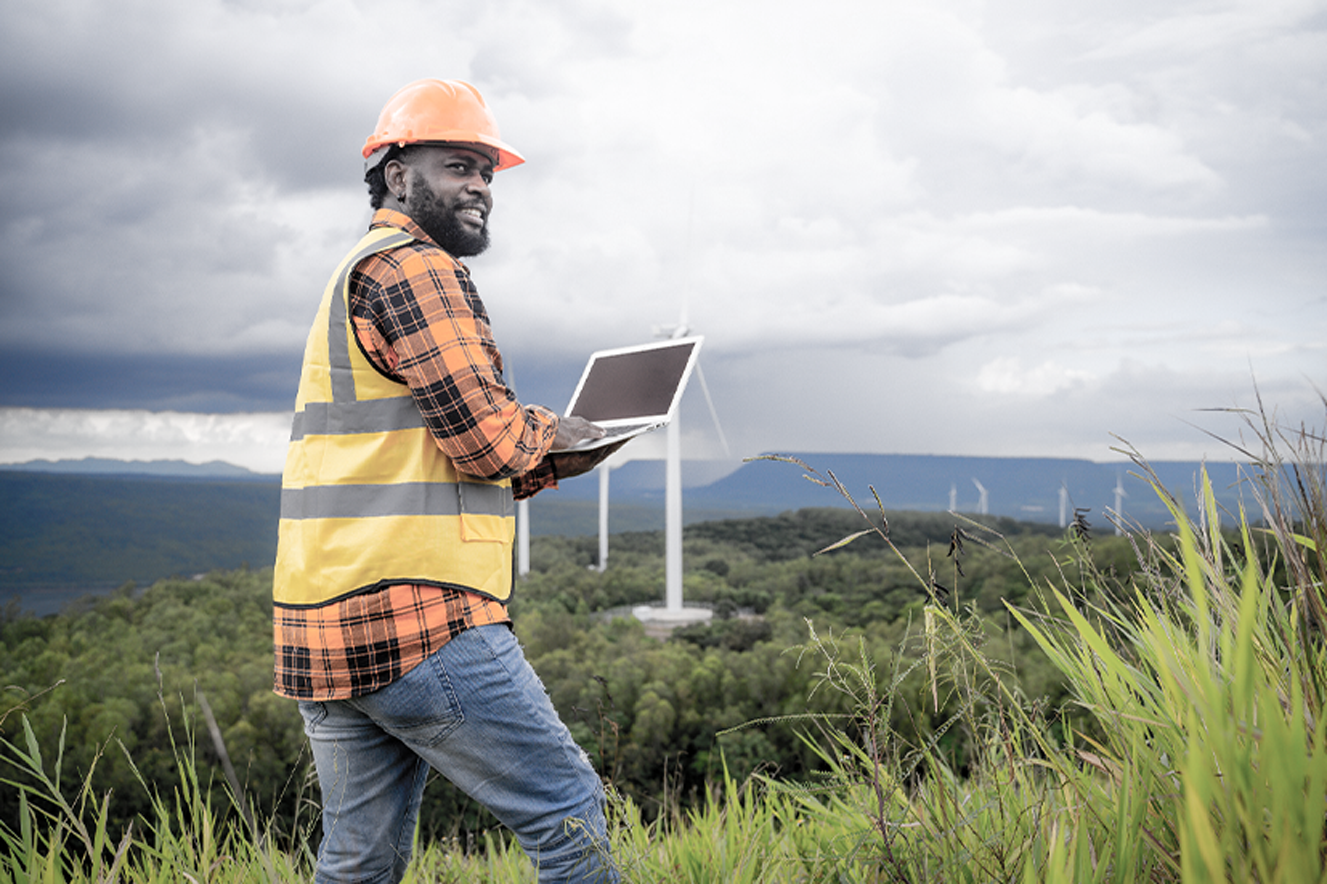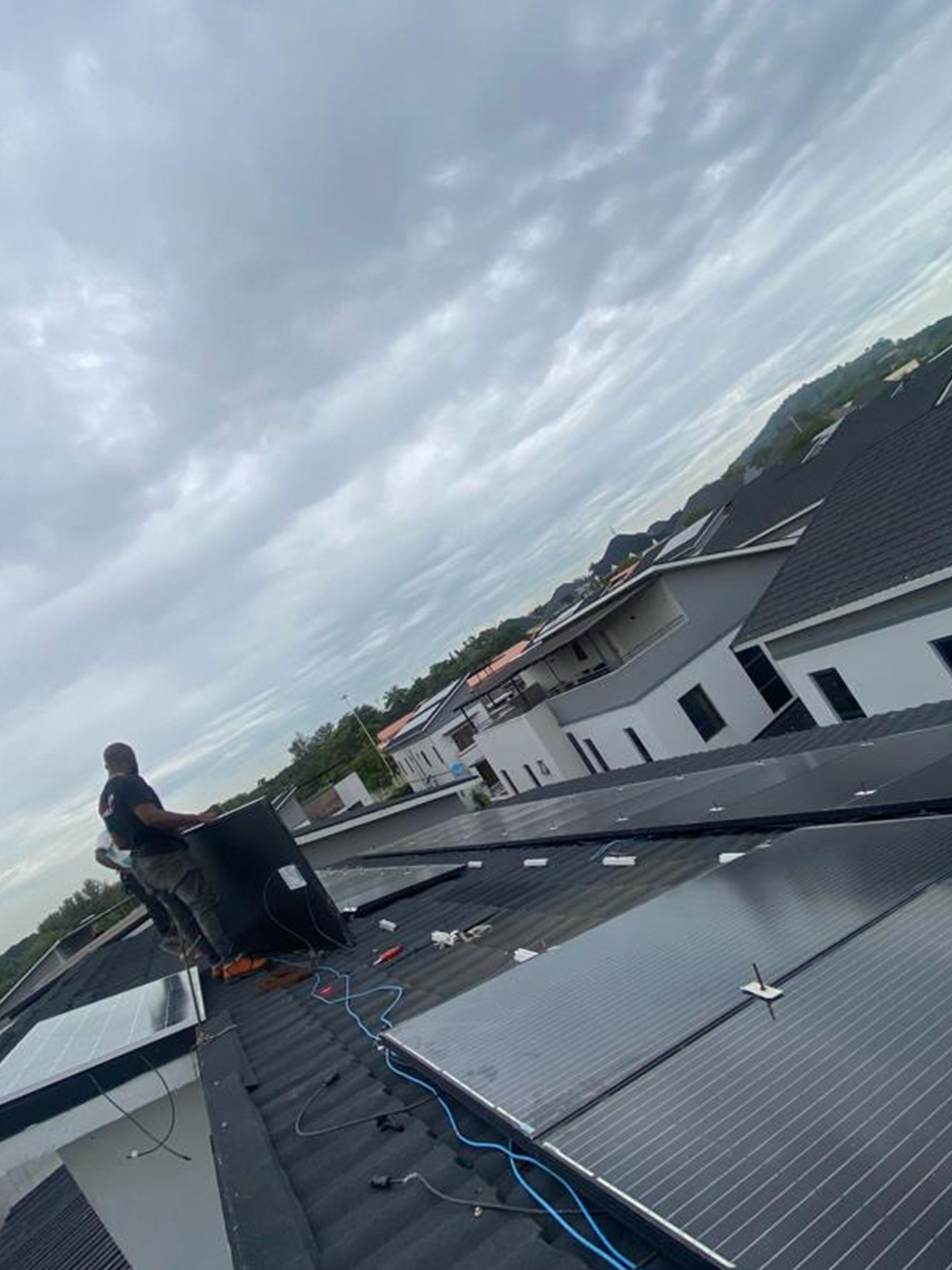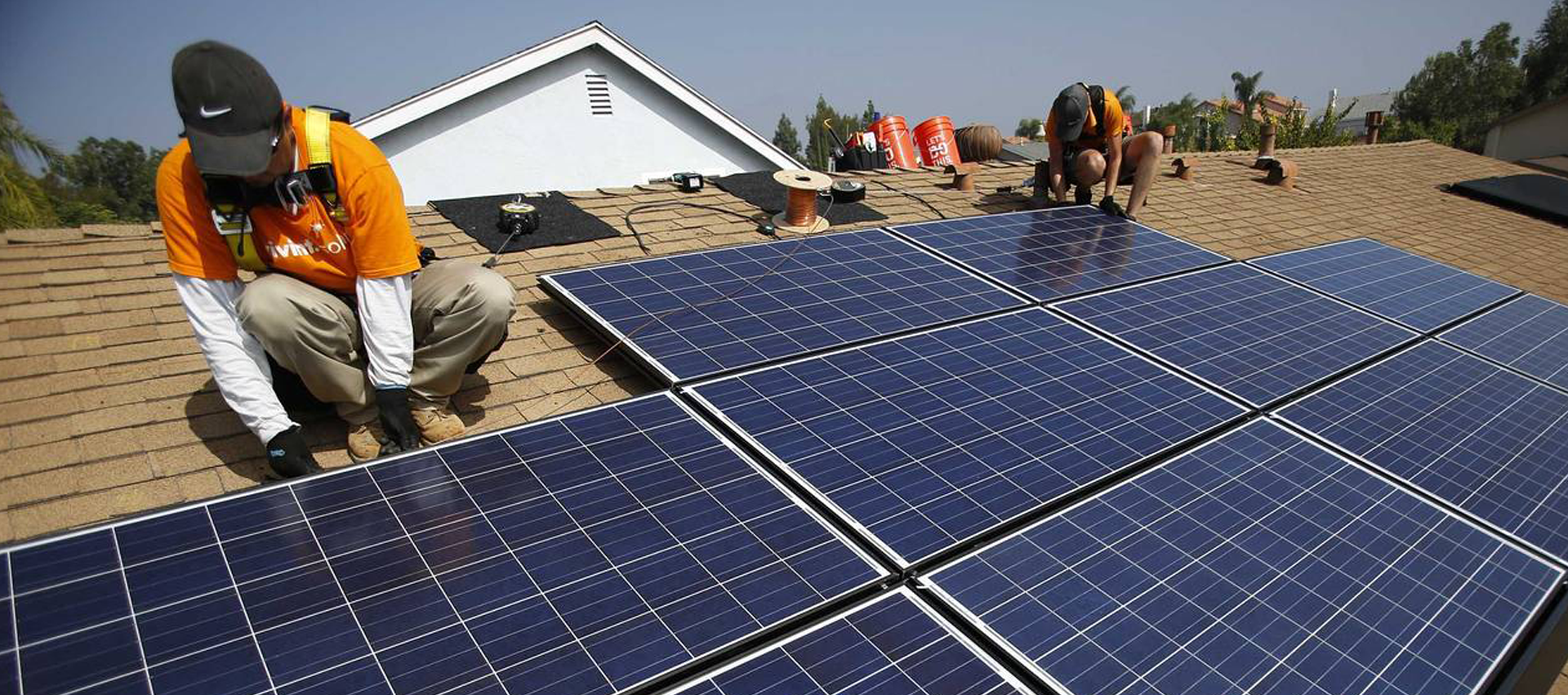
A solar panel is a device that converts sunlight into electricity by using photovoltaic (PV) cells. PV cells are made of materials that produce excited electrons when exposed to light. When considering solar panels for home installation, several types are available, each with its own unique characteristics and suitability for different situations. Here are some common types of solar panels for residential use:
1. Monocrystalline Solar Panels for Home:
- Monocrystalline solar panels are made from high-purity silicon and feature a single crystal structure, giving them a uniform black appearance.
- They are known for their high efficiency and space-saving design, making them ideal for homes with limited roof space.
- Monocrystalline panels typically have a longer lifespan and better performance in low-light conditions compared to other types.
Pros:
- High Efficiency: Monocrystalline solar panels are known for their high efficiency, meaning they can convert a larger portion of sunlight into electricity compared to other types of solar panels. This makes them ideal for homeowners with limited roof space who want to maximize energy production.
- Space Saving: Monocrystalline panels have a higher power output per square foot compared to other types of solar panels, allowing homeowners to generate more electricity with fewer panels. This is advantageous for homes with limited roof space or aesthetic concerns.
- Longevity: Monocrystalline solar panels typically have a longer lifespan compared to other types of panels, often lasting 25 years or more with minimal degradation in performance. This longevity provides homeowners with a reliable and durable energy solution.
- Better Performance in Low-Light Conditions: Monocrystalline panels perform well in low-light conditions, making them suitable for regions with overcast weather or partial shading. This ensures consistent energy production throughout the day, even in less-than-ideal solar conditions.
- Sleek Appearance: Monocrystalline panels have a uniform black color and sleek design, giving them a more aesthetically pleasing appearance compared to other types of solar panels. This makes them a popular choice for homeowners concerned about the visual impact of solar installations.
Cons:
- Higher Cost: Monocrystalline solar panels tend to be more expensive upfront compared to other types of panels, such as polycrystalline or thin-film. The higher cost can be a barrier for homeowners with limited budgets, although it may be offset by long-term energy savings and incentives.
- Susceptibility to Shading: Monocrystalline panels are sensitive to shading, meaning that even partial shading from trees, buildings, or debris can significantly reduce their energy production. Proper placement and shading analysis are crucial to maximizing the performance of monocrystalline panels.
- Manufacturing Complexity: The manufacturing process for monocrystalline solar panels is more complex and energy-intensive compared to other types of panels. This results in a higher environmental footprint associated with production, although the environmental benefits of solar energy typically outweigh these concerns over the panel’s lifetime.
- Limited Color Options: Monocrystalline panels typically come in a uniform black color, limiting design flexibility for homeowners who prefer alternative color options or integrated aesthetics. However, advancements in panel design may offer more color choices in the future.
- Potential for Hot Spots: Monocrystalline panels are susceptible to hot spots, which occur when certain areas of the panel become overheated due to shading or mismatched cells. Proper system design and installation practices can help mitigate this risk and ensure optimal panel performance.
Understanding the pros and cons of monocrystalline solar panels for home can help homeowners make informed decisions when choosing the best solar solution for their home. Consulting with a reputable solar installer can provide additional guidance and expertise tailored to individual needs and circumstances. For consultation and procurement services click here.
2. Polycrystalline Solar Panels for Home:
- Polycrystalline solar panels are made from silicon fragments melted together, resulting in a textured blue appearance.
- While slightly less efficient than monocrystalline panels, polycrystalline panels offer a more cost-effective option for homeowners on a budget.
- They are suitable for homes with ample roof space where maximizing cost savings is a priority.
Pros:
- Cost-Effective: Polycrystalline solar panels typically have lower production costs compared to monocrystalline panels, making them a more budget-friendly option for homeowners.
- Good Performance in High Temperatures: Polycrystalline panels tend to perform better than monocrystalline panels in high-temperature environments, making them suitable for regions with hot climates.
- Less Sensitive to Shading: While all solar panels are affected by shading to some extent, polycrystalline panels generally handle partial shading better than monocrystalline panels, thanks to their design and cell arrangement.
- Sustainable Manufacturing Process: Polycrystalline solar panels typically have a shorter energy payback time and lower embodied energy compared to other types of panels, making them a relatively environmentally friendly choice.
- Widely Available: Polycrystalline panels are widely manufactured and available in the market, offering homeowners a variety of options and competitive pricing.
Cons:
- Lower Efficiency: Polycrystalline solar panels are generally less efficient than monocrystalline panels, meaning they convert sunlight into electricity at a lower rate. This may require more panels to achieve the desired energy output, especially in limited roof space scenarios.
- Larger Size: To achieve the same power output as monocrystalline panels, polycrystalline panels often require more space due to their lower efficiency. This can be a limitation for homeowners with limited roof area available for solar installations.
- Reduced Performance in Low Light: Polycrystalline panels are less efficient at generating electricity under low light conditions compared to monocrystalline panels. As a result, their performance may be slightly lower during cloudy days or early morning/evening hours.
- Shorter Lifespan: While still durable and long-lasting, polycrystalline solar panels typically have a slightly shorter lifespan compared to monocrystalline panels. However, advancements in manufacturing technology have narrowed this gap in recent years.
- Aesthetics: Some homeowners may find the blue color and speckled appearance of polycrystalline panels less visually appealing compared to the uniform black appearance of monocrystalline panels. However, this is often a matter of personal preference and may not be a significant factor for everyone.
Overall, polycrystalline solar panels for home offer a cost-effective and reliable option for homeowners looking to harness solar energy for their homes, especially in regions with moderate to high sunlight exposure. However, it’s essential to weigh the pros and cons carefully and consider your specific needs and circumstances before deciding. Consulting with a qualified solar installer can also provide valuable insights and guidance tailored to your individual situation. For consultation and procurement services click here.
3. Thin-Film Solar Panels for Home:
- Thin-film solar panels use layers of photovoltaic material deposited onto a substrate, such as glass or metal, resulting in a flexible and lightweight panel.
- They have lower efficiency compared to crystalline silicon panels but perform better in high-temperature environments and partial shading conditions.
- Thin-film panels are often used in applications where weight and flexibility are important, such as on curved or non-standard surfaces.
Pros:
- Flexible Installation: Thin-film solar panels are lightweight and flexible, making them suitable for installations on curved or non-standard surfaces where rigid panels may not be feasible.
- Better Performance in High Temperatures: Thin-film panels perform better in high-temperature environments compared to crystalline silicon panels, which can experience efficiency losses in extreme heat.
- Partial Shading Tolerance: Thin-film technology is more tolerant to partial shading conditions compared to crystalline silicon panels. Even if a portion of the panel is shaded, the overall performance of the system may not be as severely affected.
- Lower Manufacturing Costs: Thin-film solar panels generally have lower manufacturing costs compared to crystalline silicon panels, resulting in potentially lower upfront costs for homeowners.
- Aesthetically Pleasing: Thin-film panels have a sleek, uniform appearance and can be integrated seamlessly into building materials, offering a more aesthetically pleasing option for homeowners concerned about the visual impact of solar installations.
Cons:
- Lower Efficiency: Thin-film solar panels typically have lower efficiency levels compared to crystalline silicon panels, meaning they generate less electricity per unit area. This may require more roof space to achieve the desired energy output.
- Shorter Lifespan: Thin-film panels generally have a shorter lifespan compared to crystalline silicon panels, with warranties typically ranging from 10 to 25 years. This may result in a shorter overall return on investment for homeowners.
- Space Requirements: Due to their lower efficiency, thin-film panels may require more surface area to generate the same amount of electricity as crystalline silicon panels. Homes with limited roof space may not be able to accommodate the necessary number of panels to meet their energy needs.
- Susceptibility to Degradation: Thin-film solar panels are more susceptible to certain types of degradation, such as potential-induced degradation (PID) and moisture ingress, which can affect their long-term performance and reliability.
- Limited Availability: Thin-film technology is less commonly used in residential solar installations compared to crystalline silicon panels, which may result in fewer options and availability from solar installers.
Overall, thin-film solar panels for home offer unique advantages such as flexibility and partial shading tolerance, but they also come with drawbacks such as lower efficiency and shorter lifespan. Homeowners considering thin-film panels should weigh these factors against their specific needs and circumstances before making a decision. Consulting with a qualified solar installer can also provide valuable insights and guidance tailored to your individual situation. For consultation and procurement services click here.
4. Bifacial Solar Panels for Home:
- Bifacial solar panels feature solar cells on both the front and back sides, allowing them to capture sunlight reflected from the ground or other surfaces.
- They offer increased energy production compared to traditional monofacial panels, particularly in environments with high albedo (reflectivity).
- Bifacial panels are suitable for installations with minimal shading and ample ground clearance, such as ground-mounted arrays or carports.
Pros:
- Increased Energy Production: Bifacial solar panels can capture sunlight from both the front and back sides, resulting in higher energy yields compared to traditional monofacial panels. This additional energy generation can lead to greater overall electricity savings for homeowners.
- Enhanced Performance in Various Conditions: Bifacial panels perform well in a range of environmental conditions, including partial shading and high albedo (reflectivity) environments. They can capture sunlight reflected from surfaces such as the ground or nearby buildings, boosting their efficiency.
- Versatility in Installation: Bifacial panels can be installed in various configurations, including ground-mounted arrays and elevated structures, to maximize their exposure to sunlight and reflected light. This flexibility makes them suitable for a wide range of residential settings.
- Long-Term Durability: Bifacial solar panels are typically built to high standards of durability and reliability, with many manufacturers offering extensive warranties on both product performance and power output. This ensures that homeowners can enjoy reliable electricity generation for many years.
- Aesthetically Pleasing: Bifacial panels have a sleek and modern appearance, with solar cells visible on both sides. This aesthetic appeal may be attractive to homeowners who prioritize the visual integration of solar panels into their homes’ architecture.
Cons:
- Higher Initial Cost: Bifacial solar panels tend to have a higher upfront cost compared to traditional monofacial panels. The increased complexity of manufacturing and installation, as well as the additional materials required, contribute to this higher initial investment.
- Site-Specific Considerations: While bifacial panels offer advantages in certain environments, their performance may be limited in locations with minimal ground clearance or shading. Site-specific factors, such as landscape features and nearby structures, must be carefully evaluated to optimize performance.
- Limited Availability: Bifacial solar panels may not be as readily available as traditional monofacial panels, and the selection of manufacturers and models may be more limited. Homeowners may need to conduct thorough research to find suitable bifacial panel options for their specific needs.
- Maintenance Challenges: Cleaning and maintenance of bifacial panels may be more challenging compared to monofacial panels, as both sides of the panels need to be kept free of debris and dirt to maximize energy production. Regular cleaning and inspection are essential to ensure optimal performance.
- Uncertainty in Performance Prediction: Due to the unique characteristics of bifacial panels and their reliance on reflected light, accurately predicting their energy output can be more challenging compared to monofacial panels. Homeowners may encounter variability in performance depending on factors such as weather conditions and surface reflectivity.
Overall, bifacial solar panels for home offer significant advantages in terms of energy production and versatility, but they also come with considerations such as cost, site suitability, and maintenance requirements. Homeowners interested in adopting bifacial panels should carefully weigh these factors to determine whether they are the right choice for their specific circumstances. Consulting with a qualified solar installer can provide valuable guidance in making an informed decision. For consultation and procurement services click here.
5. Solar Shingles or Tiles Solar Panels for Home:
- Solar shingles or tiles integrate seamlessly into the roof, serving both as roofing material and solar panels.
- They offer a aesthetically pleasing alternative to traditional solar panels, blending in with the overall architecture of the home.
- Solar shingles are suitable for homeowners seeking a discreet solar solution without compromising on curb appeal.
Pros:
- Aesthetic Appeal: Solar shingles blend seamlessly with the roof, providing a sleek and integrated look that enhances the overall aesthetics of the home. They are particularly attractive for homeowners who prioritize the visual appeal of their property.
- Architectural Integration: Solar shingles can be installed as roofing material, replacing traditional roofing tiles or shingles. This integration allows for a seamless appearance and eliminates the need for bulky solar panels mounted on top of the roof.
- Curb Appeal: Homes with solar shingles often have higher curb appeal and resale value compared to those with traditional solar panels. The integrated design enhances the attractiveness of the property and may attract environmentally conscious buyers.
- Durability: Solar shingles are designed to withstand harsh weather conditions, including high winds, hail, and heavy snow loads. They are typically made from durable materials such as tempered glass or composite materials, ensuring long-term performance and protection for the roof.
- Flexibility in Installation: Solar shingles can be installed on new construction or as part of a roof replacement project. They are versatile and can be customized to fit various roof shapes and sizes, making them suitable for a wide range of residential applications.
Cons:
- Higher Cost: Solar shingles tend to be more expensive than traditional solar panels on a per-watt basis. The cost of materials, installation, and maintenance is typically higher, which may deter budget-conscious homeowners.
- Lower Efficiency: Solar shingles generally have lower efficiency compared to traditional solar panels. The integrated design and smaller surface area result in reduced energy production per square foot, requiring more roof space to generate the same amount of electricity.
- Complex Installation: Installing solar shingles requires specialized training and expertise, as well as coordination with roofing professionals. The process can be more complex and time-consuming compared to traditional solar panel installations, potentially leading to higher installation costs and longer project timelines.
- Limited Availability: Solar shingles are not as widely available as traditional solar panels, and there may be fewer options in terms of manufacturers, styles, and warranty coverage. Homeowners in certain regions may have limited access to solar shingles, making it challenging to find suitable products for their specific needs.
- Potential for Damage: While solar shingles are designed to be durable, they may be susceptible to damage from foot traffic, falling debris, or extreme weather events. Repairing or replacing damaged solar shingles can be more complicated and costly compared to traditional solar panels.
Overall, solar shingles offer a visually appealing and architecturally integrated solution for homeowners seeking to harness solar energy while maintaining the aesthetics of their property. However, they come with higher costs and installation complexities, and their efficiency may not match that of traditional solar panels. It’s essential for homeowners to weigh the pros and cons carefully and consult with solar professionals to determine whether solar shingles are the right choice for their home. For consultation and procurement services click here.
6. Building-Integrated Photovoltaics (BIPV) Solar Panels for Home:
- BIPV systems incorporate solar panels directly into building materials, such as windows, facades, or awnings.
- They offer a seamless integration of solar technology into the building design, enhancing aesthetics while generating electricity.
- BIPV systems are suitable for new construction or renovation projects where architectural integration is a priority.
Pros:
- Aesthetic Integration: BIPV systems seamlessly integrate solar panels into the building’s architecture, providing a sleek and visually appealing appearance that enhances the overall aesthetics of the home.
- Space Optimization: BIPV panels serve a dual purpose by functioning as both building materials and solar energy generators, thereby optimizing space utilization and reducing the need for additional mounting structures.
- Architectural Flexibility: BIPV systems offer greater design flexibility compared to traditional solar panels, allowing for customization to match various architectural styles and preferences.
- Energy Efficiency: By harnessing solar energy directly at the point of consumption, BIPV systems minimize energy losses associated with transmission and distribution, resulting in improved energy efficiency for the home.
- Long-term Cost Savings: While the initial installation costs of BIPV systems may be higher than traditional solar panels, they offer long-term cost savings by reducing energy bills and potentially increasing the resale value of the home.
- Environmental Sustainability: BIPV systems promote environmental sustainability by utilizing renewable solar energy to power homes, thereby reducing reliance on fossil fuels and lowering carbon emissions.
Cons:
- Higher Initial Cost: BIPV systems typically involve higher upfront costs compared to traditional solar panels, as they require specialized integration into the building structure and may involve additional design considerations.
- Complex Installation: Installing BIPV systems requires careful planning and coordination with architects, builders, and solar installers to ensure proper integration into the building envelope, which can add complexity to the installation process.
- Limited Efficiency: BIPV panels may have slightly lower efficiency compared to traditional solar panels, as they are designed to serve a dual function as building materials and solar generators, which can impact overall energy production.
- Maintenance Challenges: BIPV systems may pose maintenance challenges due to their integrated design, as any damage or malfunction may require specialized expertise and potentially disrupt the building envelope, leading to increased repair costs.
- Compatibility Issues: BIPV systems may not be compatible with all building types or architectural styles, limiting their applicability in certain situations and requiring careful consideration during the design phase.
- Reliance on Building Codes: The adoption of BIPV systems may be influenced by building codes and regulations, which may vary by location and could affect their feasibility and cost-effectiveness for home installations.
While BIPV systems offer numerous benefits in terms of aesthetics, space optimization, and energy efficiency, they also present challenges related to cost, installation complexity, and maintenance. Homeowners considering BIPV installations should carefully weigh these pros and cons to determine whether BIPV is the right choice for their specific needs and circumstances. For consultation and procurement services click here.
Conclusion
Each type of solar panels for home has its own advantages and considerations, so it’s important for homeowners to assess their specific needs, budget, and site conditions when choosing the most suitable option for their home. Consulting with a qualified solar installer can help homeowners make informed decisions based on their individual circumstances.
J & W Solar Company offers the best solar services with a guarantee for a lifetime.
Related article – Best Solar Company in Nigeria: Discover the Truth

